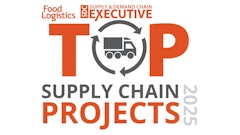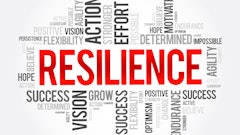
We've reached a crossroads. Today, we stand at the intersection of technological innovation, global economic shifts and evolving regulations transitioning the state of procurement in 2024 into a dynamic tapestry of challenges and opportunities. Procurement, once seen as a traditional back-office function, has transformed into a strategic powerhouse that can drive organizational success. Aman Mann, co-founder and CEO at Procurify, says in 2024, the role of procurement is more important than ever, as businesses face complex and dynamic macroeconomic conditions that impact the way they grow and manage their operations.
Digital Transformation and Technological Advancements
The dawn of 2024 witness's cutting-edge technologies in procurement. Artificial intelligence (AI) and machine learning (ML) are not just buzzwords but integral parts of procurement strategies. Keith Hartley, CEO at LevaData, says it's nearly impossible to ignore the impact of AI and automation today.
"AI-powered sourcing intelligence platforms have revolutionized the procurement profession by offering numerous benefits. These platforms not only help navigate vast amounts of data, including market insights, customer information, vendor details, and financial data, but also provide valuable insights on vendor and part risk, cost-saving opportunities, and enhanced benchmarking," says Keith Hartley, CEO at LevaData. "By leveraging AI-powered intelligence platforms, teams can quickly identify significant cost savings, thereby strengthening the company's financial performance. Consequently, organizations are reevaluating the role of procurement, elevating it from a mere cost-cutting function to a strategic partnership."
Scott Macfee, CEO at SpendHQ, agrees that AI is finally coming into its own and demonstrating wide-scale use, but for all of AI’s exciting promise and use cases, often its most practical and effective applications involve taking on tactical, scalable and repeatable work. "Procurement has long had a big data problem – disaggregated, dirty data that needs to be consolidated, organized, cleansed, enriched and analyzed. Deploying AI applications that help procurement teams turn messy category, spend and supplier data into decision points is a significant boost for procurement."
In cost cutting, specifically in today's economic climate, Mann says solution consolidation is often overlooked as a huge driver of cost savings and efficiency. "Point solutions offer specialized functionality but lead to redundancy, process gaps, and integration challenges. By consolidating into a P2P software solution, organizations can sync data between finance and procurement workflows, eliminate redundancy, and better visualize real-time spend data. Not to mention the software license cost savings."
To leverage advancements, Aylin Basom, CEO at Supplier.io, says businesses need to prioritize their data. In the 2023 State of Supplier Diversity Report, 67% of organizations reported they are using third-party data services to improve data accuracy, a 44% increase over 2022.
"The supplier data enterprises rely on is widely dispersed across multiple providers and sources, resulting in significant fragmentation. This poses challenges for organizations seeking to effectively track and assess the true impact of their suppliers and supply chain," says Supplier.io CEO Aylin Basom. "Accurate, auditable data is becoming more critical than ever for procurement’s effectiveness and efficiency. Supplier diversity and ESG data are now being used for purchase and other financial decisions. That said, accurate and actionable data is business critical."
And as we focus on data and the way we use AI and other automation tools, Dean Alms, chief product officer at Aravo, believes that a highlight on the growth of criminals and advanced threats to this technology is key because it puts organizations at risk for cyber-attacks. "Organizations can employ unified TPRM programs to manage these risks, in addition to other third-party risk domains. Holistic TPRM programs that provide continuous monitoring and mitigation of all risks, including cyber, will help businesses prevent data breaches, safeguard operations, and maintain the integrity of their extended enterprise."
Sustainable and Responsible Procurement
Organizations are increasingly recognizing the importance of responsible sourcing and environmental stewardship, including the social impact in their procurement decisions. The demand for eco-friendly products, ethical labor practices and a commitment to corporate social responsibility has led to a paradigm shift in supplier selection criteria. Julia Salant, general manager, Carbon Solution at EcoVadis, says specialized sustainability platforms are also playing a crucial role in addressing the challenge of understanding and managing Scope-3 emissions.
"For example, carbon hotspot mapping facilitates the identification of carbon risks and reduction opportunities based on industry, geography and supplier size. This tool, combined with vendor-risk ratings on carbon- management practices, equips companies with the insights needed to make informed decisions. These technologies also foster engagement between companies and suppliers by providing them with collaborative tools to guide them through corrective action planning. As organizations increasingly rely on technology to meet sustainability goals and compliance requirements, the outlook is promising for continued innovation and efficiency gains," explains Salant.
Sustainable procurement not only aligns with corporate values but also responds to growing consumer expectations for environmentally conscious products. Companies that integrate sustainability into their procurement processes not only contribute to a healthier planet but also enhance their brand reputation and attract environmentally conscious consumers.
Global Economic Impact
The global economy, in a perpetual state of flux, plays a pivotal role in shaping procurement dynamics. The aftermath of geopolitical events like the upcoming election, trade tensions including the war in Ukraine, and those economic uncertainties we've yet to uncover, Alms says, may bolster a big shock to the economy over the next year and lead to a reevaluation of priorities and strategies.
"Although the U.S. economy has avoided a recession to date, the global economy remains in a state of uncertainty given persistent inflation and several geopolitical crises that have been injecting risk into global trade. Because of this, procurement teams are still working overtime to optimize sourcing and spending, cut costs and increase savings, and reduce and mitigate risks," says Macfee. "They’re still trying to drive resilience through their extended supply chains and insulate them against sudden shocks to the global business environment, such as a major war in the Middle East and any related impacts on shipping routes, potential changes to China trade policies, or civil unrest in geographically vital regions."
In 2024, the procurement landscape remains closely tied to the economic health of nations, requiring organizations to adopt agile strategies to navigate volatility. Hartley says companies need to maintain a keen focus on sourcing materials and parts. According to a 2022 survey of manufacturing CEOs conducted by EY, 68% of global industrial products CEOs are increasing their investments in AI-powered digital technologies. By addressing these challenges and leveraging technological advancements, LevaData CEO Keith Hartley explains, businesses can enhance their supply chain resilience and navigate the complexities of the global economic landscape more effectively.
Regulatory Developments
Just like the economy, regulations are developing and presenting challenges, and opportunities, for procurement professionals. In 2024, a heightened focus on ESG and security is on the minds of procurement leaders.
"ESG regulations will continue to have a significant impact on procurement. California’s Climate Corporate Data Accountability Act and the Corporate Sustainability Reporting Directive (CSRD) in Europe are just the beginning - and although much is pending, businesses must integrate data reporting abilities now to prepare. Plus, we can only expect many regions to follow suit of these leaders," says Basom.
Complying with these laws, Salant says, requires a proactive approach. "Prioritizing the most relevant suppliers first, leveraging benchmarks and a performance approach, engaging in meaningful dialogue, understanding their place in their sustainability journeys, and fostering collaboration to improve their environmental and human rights practices have emerged as best practices. This collaborative approach is proving essential for achieving enduring and far-reaching sustainability gains across supply chains."
Organizations that continue to invest in robust compliance programs and stay abreast of regulatory changes position themselves to not only mitigate legal risks, but also enhance their reputation as responsible corporate citizens. Macfee says there are a handful of recent laws or pending regulation changes that will directly impact many procurement organizations— underscoring the need for procurement intelligence and automation.
Last May, Canada passed its Modern Slavery Act, which requires Canadian companies that buy, sell and import goods into Canada to report their and their suppliers’ forced- labor risk-reduction efforts to the appropriate authorities by May 31. Failing to do so could result in financial penalties.
Last December, the European Council and the European Parliament reached a provisional deal on the Corporate Sustainability Due Diligence Directive concerning environmental and human rights protections. This will affect both EU and non-EU companies who meet certain revenue thresholds, who will have to comply or face fines up to 5% of their revenue.
Last year, the EU passed the Corporate Sustainability Reporting Directive and California passed the Climate Corporate Data Accountability Act, which will, in part, require certain companies in the EU and CA to track, report and publicly disclose their greenhouse gas (GHG) emissions data from across their supply-chains (Scope-3 data). And in May 2024, the U.S. Securities and Exchange Commission is set to issue its long-awaited rules change for publicly traded companies in the U.S. to track and disclose Scope-3 emissions. "Corporate boards, customers and employees are holding procurement teams accountable to being able to track how they are benchmarking against compliance goals and performance goals independent of meeting regulatory requirements to demonstrate progress and commitment to continuous improvement," says Macfee.
Procurement in 2024 is driven by digital transformation, sustainability imperatives, global economic considerations and evolving regulatory frameworks. The focus is shifting towards amplifying supply chain competitiveness, bolstering resilience to ensure business continuity and enhancing visibility to preempt disruptions, says Aylin Basom, CEO at Supplier.io. "A key aspect of this evolution is the enablement of precise ESG reporting, which is crucial for companies as they navigate the complexities of modern corporate responsibility. Addressing the challenge of supplier data fragmentation is also paramount, ensuring that information is consolidated, actionable and supports the strategic goals of the organization."
Future Success
Success in procurement requires a proactive approach that embraces innovation and fosters sustainability, while maintaining a deep understanding for economics. Looking ahead, Alms says, procurement teams will need to prioritize managing risks holistically and complying with new regulations.
According to Macfee, organizations that will “win” in the next decade will have procurement at the table as a key decision maker and value driver. "They’ll view procurement’s role as truly strategic value, not merely a cost center that buys things and cuts costs for the organization. Instead, winning organizations will enable procurement to drive financial and non-financial performance across business units and the company’s supply chain. They’ll continue to reap the benefits of procurement teams that drive maturity through technology that enables the execution of board-level strategic imperatives, such as driving ESG performance, building resilient supply chains, reducing risks and contributing to EBITDA (or profitability) enhancement."
The organizations that can adapt and leverage these trends will not only survive but thrive in procurement for years to come.



















